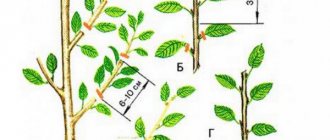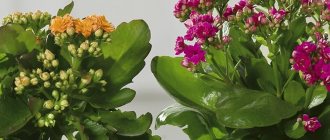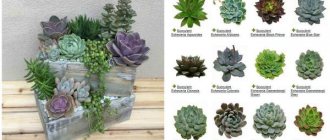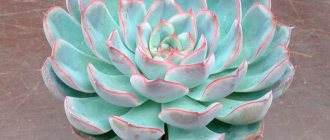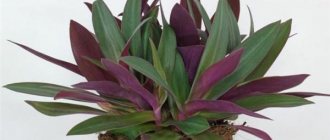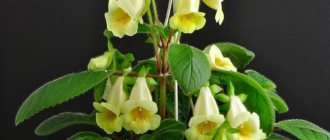The dollar tree is a real decoration for a home flower garden or winter garden. It is highly valued for its unpretentiousness and unusual foliage shape. An evergreen bush with dense glossy leaves always looks beautiful and attractive. But it grows rather slowly and practically does not bloom at home. Even with good care, the plant does not live more than 10 years, so you should take care of its propagation in advance. Let's look at all the available ways to propagate Zamioculcas.
Features of Zamioculcas
A special feature of Zamioculcas is that the leaves are the entire aerial part, and not each leaf separately, as many people think. It consists of several plates located on the handle.
Unlike other tropicals that live in apartment conditions, this plant is not whimsical - it grows well in the heat, in a cold room - of course, you need to observe moderation. The only thing the flower cannot tolerate is excess watering in a cool room. The roots may begin to rot; the zamioculcas will need to be urgently rescued and replanted.
The plant can survive in any soil, so it does not need to select anything special. To create conditions for full growth, it is enough to place the flower on a lighted windowsill, but shade it from the sun's rays so that they do not damage the leaves.
Carefully! Zamioculcas is very poisonous - alkaloids are contained in all its parts - aboveground and underground, so any manipulations are carried out with gloves.
What parts of the dollar tree are suitable for cuttings?
Cutting - part of a Zamioculcas branch with paired leaves . In order to avoid unpleasant surprises for propagation, you need to select only healthy branches without damage, without spots, with intense color and without signs of damage by pests or infectious diseases.
In order for the cutting to take root, it will need a lot of nutrients, so you should not choose very old or just sprouted shoots. The top of the mother plant or a semi-lignified shoot older than 4-5 years is ideal for cuttings.
Breeding rules
Zamioculcas grows slowly, so adult crops are rarely replanted. It is necessary to select the right pot so that its size exceeds the previous one by no more than 2 cm. If you plant it in a large one, all the energy will go into root growth, while the leaves will stop developing.
The peculiarity of the dollar tree is that its root system stops growing when it touches the edge of the pot. After this, foliage begins to develop.
To get a lot of small zamioculcas, reproduction at home can be done in any way:
- whole cuttings;
- separate leaves;
- dividing a root or bush.
The main condition for the reproduction of a dollar tree is a healthy plant. You cannot take leaves damaged by rot - they will not take root and the soil will be contaminated. Parts of the flower take root in water, peat, and sand.
Important ! The smaller the rooted part, the longer you will have to wait for a full-fledged plant. In general, the process takes about 6 months.
Possible problems
After the plant has been propagated, flower growers often face problems associated with the further growth and development of young seedlings. Some of them are easy to solve, while others require special attention and intervention from specialists.
Stopping growth
Zamioculcas is characterized by very slow growth. But it happens that after rooting cuttings or dividing tubers, the plant stops growing completely.
You shouldn’t immediately overfeed it with fertilizers or try to water it more. This will only make things worse. Most likely, the flower needs time to get used to the home microclimate and begin to grow.
Leaf burns
An adult zamioculcas needs a lot of light, but young specimens are best shaded from open rays.
Under direct sun, the foliage begins to hurt, burns appear, the plant withers and disappears.
Overflow
The dollar tree does not tolerate excess moisture, so watering should be very moderate. This is especially true for the plant's dormant period (October-March).
If watering is frequent and supplemented by leaf irrigation, then the plant begins to rot - the leaves darken and fall off.
If an adult bush can still cope with rotting, growing new roots to replace the rotten ones, then the young one will die immediately.
Soil selection
For aroids and succulents, the soil should be light and well-permeable to air. Heavy soil mixed with clay will slow down the growth of the root system and can lead to rotting. Clay or too oily soil retains water well, preventing the roots from breathing.
To properly compose the soil mixture, you need to take more sand and peat, for example, 2 - 3 parts of both. The remaining components - garden soil and turf - are taken in smaller proportions. The optimal ratio is:
- peat 2 parts;
- sand 2;
- turf soil 1 part;
- leaf humus 1.
You can add 0.5 parts of mullein humus for nutritional value, but this is not necessary. To prevent rotting, it is recommended to mix perlite into the soil and add pieces of charcoal.
Important ! Drainage must be laid at the bottom. In case of overflow, there will be air left for breathing and the flower will not get sick.
How to divide a flower?
Careful separation of the zamioculcas tuber into parts is carried out using the following technology:
- Remove the plant from the pot using the transshipment method, being careful not to damage the root system.
- Shake off the soil, examine the roots and determine which parts of the plant are equipped with buds, roots and have a rosette with one or more leaves.
- Using a sharp, disinfected knife, divide the tuber into parts, each of which will have growth points for new shoots.
- Treat the cut areas with activated carbon and leave to dry for several hours.
- Place the fragments separated from the parent bush in containers with prepared substrate, without going too deep.
- Do not water the planted bushes for three days.
Important! If the dug rhizome has a single bud, it cannot be divided into segments. This can lead to the death of the plant.
Methods of propagation of Zamioculcas
When Zamioculcas reproduces by leaf, the process of formation of a root and a small tuber occurs due to the supply of nutrients found in the leaf blade. When this supply is exhausted, the planting material turns yellow. There is no need to throw away the cutting at this moment - this is exactly how the dollar tree reproduces. After some time, a new leaf appears above the soil surface.
The same thing happens if you cut a tuber. The appearance of the above-ground part is due to the nutrients stored by the plant.
In order for the transplantation of a dollar tree to be successful, they stock up on fungicide and activated carbon in advance to disinfect the roots. They are delicate and can easily break if handled carelessly. To prevent bacteria and fungus from getting into the wound, they are dried after separation and treated with chemicals.
Cuttings or branches in the ground and in water
It is easier to propagate with a whole cutting, which has many leaf blades and growing points. A large specimen contains a larger supply of minerals, so it takes root more successfully and faster. If the old zamioculcas has grown greatly, propagation by a branch will be the best way for it for the following reasons:
- you can get several large copies at once;
- randomly fallen leaves are also rooted so that flowers will grow from them later;
- the culture rejuvenates and begins to grow again, like a new plant.
True, in this case it is necessary to injure the plant, after which it takes longer to recover and remains in the pot without signs of growth.
Potassium humate or another rooting agent can be added to the water to speed up the root formation process. It is best to root Zamioculcas when propagating by cuttings in May. At this time, the daylight hours are long, the plant has enough light to synthesize chlorophyll.
Without water, immediately in the ground, Zamioculcas also takes root well. The main thing is that the soil is moist, but not flooded. Water the cuttings along the edge of the pot, the moisture then rises in the form of steam through the layers of soil and the roots can breathe.
With this method of propagation, a tuber appears in about a month and a half. He is small and delicate, so you don’t need to touch him for 6 months. Transplantation is carried out when the roots have outgrown the volume of the pot and appear from the drainage holes.
Leaf propagation
You can use a less traumatic method for zamioculcas - leaf propagation:
- To do this, not the entire cutting, but 1–2 leaf plates are cut off with a knife close to the branch.
- Place the leaf in water with a rooting agent and shade it.
- Periodically spray and ventilate. You can put on a transparent bag or make a greenhouse out of film.
The soil is taken loose. Just sand, pre-calcined in the oven, will do, but it is better to mix it with peat 1:1 for greater nutritional value. Although, while the leaf does not have a root system, it will not be able to feed from the soil - this is for the future.
There is no need to overwater or spray the cuttings heavily. The soil must be permeable to air - this is the main condition for the successful reproduction of zamioculcas. If the growth of the cutting stops - its height has not changed in several days, then you need to check the soil for moisture. Perhaps the grower overdid it and did not add water, for fear of rotting.
Dividing the bush
If the time has come to replant the dollar tree, propagation at home can be combined with this procedure. An adult Zamioculcas may have several tubers in the soil and large feathery leaves and branches growing from them. To decide how to divide the zamioculcas bush, it is taken out of the pot and inspected. Most often, all the roots turn out to be intertwined; they will have to be carefully untangled in order to reduce injury. The tubers are in the center, close to each other. They are connected by a small thin bridge, which is cut with a knife and rubbed with fungicide.
Procedure:
Get a flower.
- Check that each tuber has a growing point - a branch or bud. Otherwise, the tuber without a bud may die.
- Carefully cut off the parts that represent individual root systems.
- Unravel the roots.
- Treat cuts and breaks with fungicide and leave to dry for 5 – 6 hours.
- Prepare the soil and lay drainage.
- Plant zamioculcas in the soil so as not to deepen the root collar too much.
Next, the flowers are placed in a bright place without direct sunlight. Over the next 4 to 5 months, the plants will adapt and take root.
Tuber division
The tuber that has several growth points - green buds - is suitable for division. If there is only one growth point, the underground part is not divided, since it will not be able to develop and will rot.
If the flower meets all the parameters, for example, there are three growth points, a tool is prepared - a sharp knife and activated carbon. Before manipulation, you must wear gloves and protect your eyes.
How to do it:
- Cut the rhizome as planned.
- Treat with activated carbon or fungicide.
- Leave the sections to dry for 3 – 4 hours.
- During this time, prepare a damp substrate and place it in a pot with large drainage holes.
- Replant the divisions.
The leaf embryo must be above ground level in order to begin to develop and produce chlorophyll.
Caring for a young plant
At the first stage of growth, immediately after transplantation, Zamioculcas will not grow. He needs time to get used to the new soil. You can help the plant by creating favorable conditions. These are temperature conditions, light and watering. Immediately after reproduction, zamioculcas is not fed - all the nutrients are in the soil.
Temperature
The optimal temperature in summer during the active growing season will be 22 - 25 degrees. Humidity is moderate. In preparation for wintering in the fall, the plant is transferred to a cool room with a temperature of 16 - 18 degrees. The flower is not afraid of drafts, but the room must be ventilated often - every day.
Lighting
Thick leathery leaves can get burned if the plant is exposed to the sun without gradually acclimating. The most suitable place for Zamioculcas is a south-eastern window or a southern window behind a curtain or blinds. On the north side the flower will feel worse due to lack of light.
Watering
You need to water on demand: if the soil is dry, add water, draining the rest of the tray. It is necessary that there is air between the roots and the bottom of the pot, then the roots will not rot. Water carefully in winter if the room is cool. In this case, it is better to wait until the soil is completely dry and then water.
In summer, the soil should not be allowed to dry out completely - this leads to yellowing of the foliage and its falling off. Also, the flower will grow poorly without moisture, consuming it from tuber reserves. It is dangerous to propagate a weakened plant - it may not survive the procedure.
Feeding
Fertilizers can be applied from the beginning of the growing season - in the spring. Until autumn, water with a nutrient solution twice a month. Old plants, which are rarely replanted, especially need minerals, since they take all their nutrition from the soil to grow.
In winter, do not feed zimioculcas - this can cause harm. Fertilizers are purchased for succulents or cacti. The plant absorbs nutrients better in sunny weather. If it is rainy and cloudy, it is better to postpone watering.
Formation
Old leaves naturally dry out as they grow. To prevent them from drawing nutrients from young branches, old ones are cut off. You also need to remove yellowed leaves - they contain fungal spores that can infect the entire bush.
To prevent long branches from breaking, it is recommended to provide a support and secure the flower with plastic rods. Zamioculcas grows symmetrically, as far as old branches are concerned. It is capable of forming its own crown, so pruning complex green leaves is not necessary. If this is done, you can root the cuttings to grow new plants.
Transfer
Young plants need replanting while their root system is growing and green mass is growing. When the dollar tree reaches its maximum and growth needs to be slowed down, it is not replanted, since the root receives a stimulus to grow, and the leaves follow it.
The signal for replanting is that the roots fall out from below through the drainage holes.

